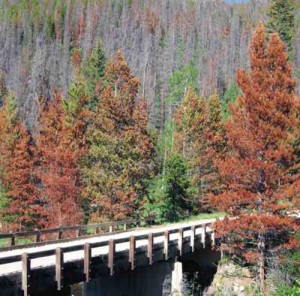Brief by Allen Best
Wildlife – December 2007 – Colorado Central Magazine
It’s been a bad, bad year for bears in the Lake Tahoe Basin. A record 75 bears have been struck and killed by vehicles, bears have snuck into homes, and in one case a police officer shot a bear as he was being charged.
If only bears stayed in the backcountry. To that end, some 30 local residents have been dropping fruits, berries, nuts, fish and other food in the forests around Lake Tahoe in recent weeks.
The Reno Gazette-Journal says one woman has spent $10,000 on nuts and fruits, distributing them by foot. Pilots have also dropped food from their planes.
The local grassroots organization, Bear League, has not taken part, but defends the practice.
“It’s a whole lot more natural if bears are foraging in backwoods and finding food than picking through someone’s refrigerator,” said Ann Bryant, the group leader. “We have to get the bears out of our neighborhoods and bring them back to where they belong.”
State wildlife organizations frown on artificial feeding. They say feeding bears could make them more closely associate humans with food and make them more likely to congregate, raising the threat of disease transmission and confrontations. Artificial food sources could also lead to more cubs when the land can’t support the animals.
But Lynn Rogers, a biologist with the North American Bear Center in Ely, Minn., believes those assertions lack empirical support.
“I don’t know of anything the people are doing (at Lake Tahoe) that would create nuisance problems,” he said. “It has to be considered experimental, but there’s a growing body of data that suggests supplemental feeding can act as a buffer against nuisance behavior rather than an introduction to it.”

